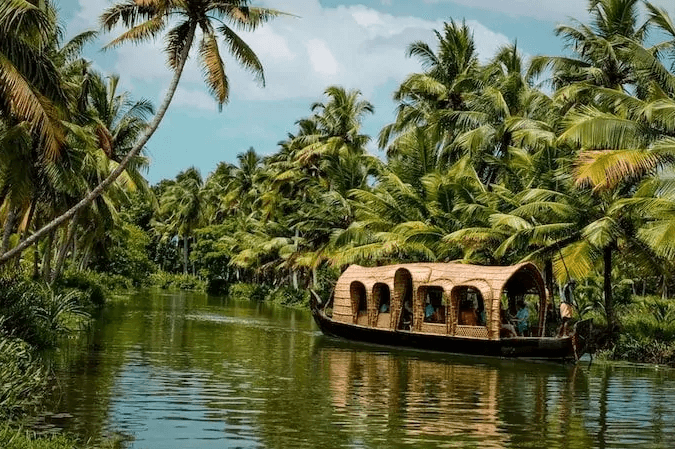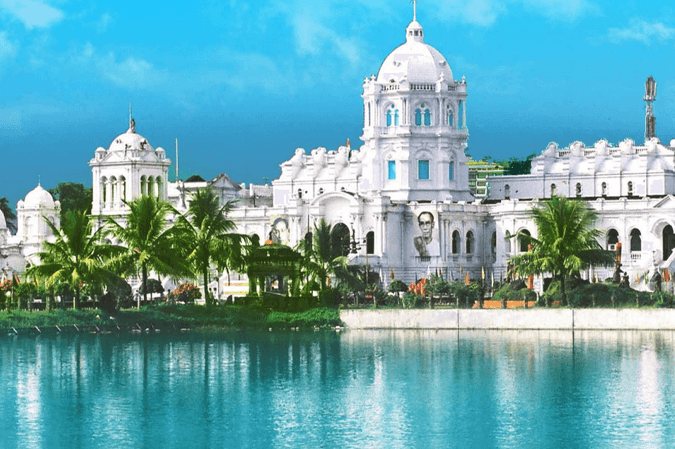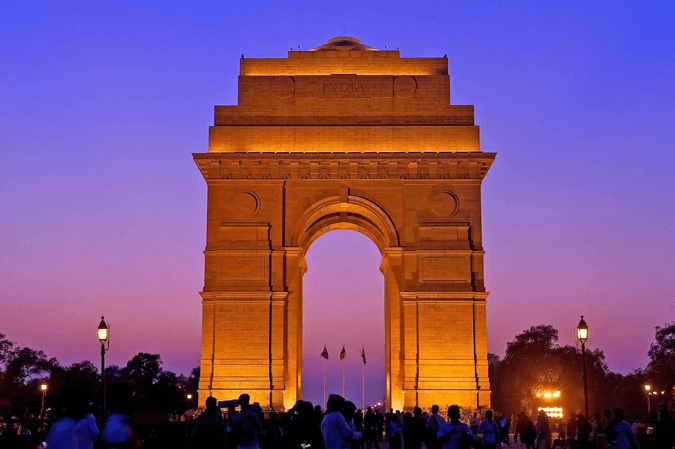1. History
Kerala, located in the southwestern region of India, has a rich and diverse history that dates back thousands of years. The region was known to ancient Romans, Greeks, and Arabs due to its flourishing spice trade. Kerala’s history is marked by its ancient Dravidian culture, which was influenced by various dynasties such as the Cheras, Cholas, and Pandyas. The arrival of Christianity, Islam, and Judaism also played a significant role in shaping Kerala’s cultural fabric. European colonial powers, including the Portuguese, Dutch, and British, established trading posts and exerted influence over the region, particularly in the 15th and 16th centuries. Kerala became part of the Indian Union in 1956, following the reorganization of states along linguistic lines.
2. Landscape
Kerala is renowned for its diverse and picturesque landscapes, which include lush green forests, serene backwaters, palm-fringed beaches, and the Western Ghats, a UNESCO World Heritage site. The state is divided into three distinct geographical regions:
- Western Ghats: A mountain range that runs parallel to the western coast, home to rich biodiversity and numerous hill stations like Munnar and Wayanad.
- Coastal Plains: The Malabar Coast, known for its fertile soil, extensive coconut plantations, and scenic beaches.
- Backwaters: A unique network of interconnected canals, rivers, and lakes, with Alleppey (Alappuzha) being a prominent destination for houseboat cruises.
3. Area
Kerala covers an area of approximately 38,863 square kilometers (15,005 square miles), making it one of the smaller states in India. Despite its size, Kerala is densely populated and is known for its high human development indicators.
4. Climatic Conditions
Kerala has a tropical climate with high humidity and receives abundant rainfall due to the southwest monsoon:
- Monsoon Season: Lasts from June to September, bringing heavy rainfall across the state.
- Winter Season: From November to February, with mild temperatures and low humidity, making it the best time to visit.
- Summer Season: From March to May, characterized by hot and humid conditions, especially in the coastal plains.
5. Historical Places
Kerala is home to numerous historical sites that reflect its cultural and architectural heritage:
- Fort Kochi: A historic area in Kochi known for its colonial-era architecture, including the Portuguese-built St. Francis Church and the Dutch Palace.
- Padmanabhapuram Palace: A wooden palace located near Thiruvananthapuram, showcasing traditional Kerala architecture.
- Bekal Fort: A massive fort located in the Kasaragod district, offering panoramic views of the Arabian Sea.
- Thrissur Pooram: An annual Hindu temple festival held at the Vadakkunnathan Temple, featuring grand processions and cultural performances.
- Mattan Cherry Synagogue: One of the oldest active synagogues in the Commonwealth, located in Kochi.
6. Festivals
Kerala is known for its vibrant festivals, which are a reflection of its diverse culture and religious traditions:
- Onam: The most important festival of Kerala, celebrating the homecoming of the mythical King Mahabali with grand feasts (Onasadya), boat races, and cultural performances.
- Vishu: The Malayali New Year, marked by the Vishukkani (auspicious sight) and Vishu Sadhya (feast).
- Thrissur Pooram: A spectacular temple festival featuring a parade of decorated elephants, fireworks, and traditional music.
- Navaratri and Deepavali: Celebrated with great fervor across the state, with temple rituals, lighting of lamps, and cultural events.
- Boat Races: The Nehru Trophy Boat Race on the Punnamada Lake is a popular event, attracting thousands of spectators.
7. Environment
Kerala is known for its rich biodiversity and is home to several national parks and wildlife sanctuaries, such as:
- Periyar National Park: A well-known wildlife reserve in Thekkady, famous for its elephant and tiger populations.
- Silent Valley National Park: Part of the Western Ghats, this park is a biodiversity hotspot, housing rare and endangered species.
- Wayanad Wildlife Sanctuary: Known for its elephants, tigers, and diverse flora.
- Vembanad Lake: The longest lake in India, known for its unique ecosystem and bird population.
Environmental challenges in Kerala include deforestation, urbanization, and the impact of climate change, leading to frequent flooding and landslides. However, the state has made significant efforts in conservation and sustainable development.
8. Society
Kerala is often referred to as “God’s Own Country” due to its natural beauty and the harmonious coexistence of its diverse population. The state has a literacy rate of over 96%, the highest in India, and a strong emphasis on education and healthcare. The population is a mix of Hindus, Christians, and Muslims, with each community contributing to the state’s cultural richness. Malayalam is the official language, though English is widely spoken and understood. Kerala is also known for its traditional art forms, such as Kathakali (classical dance-drama), Theyyam (ritualistic dance), and Mohiniyattam (classical dance). The state’s social indicators, such as low infant mortality and high life expectancy, are comparable to those of developed countries.
9. Interesting and Hidden Facts
- Ayurveda: Kerala is globally recognized as a hub for Ayurveda, with numerous wellness centers offering traditional treatments and therapies.
- Literacy Rate: Kerala has the highest literacy rate in India, with a strong focus on education, especially for women.
- World’s First Baby-Friendly State: Kerala was declared the world’s first “Baby-Friendly State” by UNICEF and WHO in 2002, recognizing its efforts in promoting breastfeeding.
- Largest Producer of Coir: Kerala is the largest producer of coir and coir products in India.
- Sabarimala Temple: One of the largest annual pilgrimage sites in the world, attracting millions of devotees during the Mandala season.
- First State to Achieve Total Primary Education: Kerala achieved total primary education as part of a literacy mission in 2016.
Sources
- History and Cultural References:
- Aiyangar, S. Krishnaswami. South India and Her Muhammadan Invaders. Oxford University Press, 1921.
- Menon, A. Sreedhara. A Survey of Kerala History. D.C. Books, 2007.
- Geography and Landscape:
- Encyclopedia Britannica, “Kerala”, 2021.
- Kerala Tourism Development Corporation (KTDC), “Explore Kerala”, 2022.
- Climate:
- Indian Meteorological Department (IMD), “Climatic Conditions of Kerala”, 2022.
- Historical Places:
- Archaeological Survey of India, “Monuments of Kerala”, 2021.
- Lonely Planet India, Kerala: A Cultural History, Lonely Planet Publications, 2020.
- Festivals:
- The Hindu, “Festivals of Kerala”, 2022.
- Kerala Tourism Official Website, “Festivals and Events”, 2023.
- Environment:
- Kerala Forest and Wildlife Department, “Biodiversity and Conservation in Kerala”, 2021.
- Ministry of Environment, Forest and Climate Change, “Environmental Profile of Kerala”, 2020.
- Society:
- The Times of India, “Kerala: Social Indicators and Development”, 2022.
- United Nations Development Programme (UNDP), “Human Development Report 2020”.
- Interesting and Hidden Facts:
- Economic Times, “Unique Aspects of Kerala’s Economy”, 2022.
- Kerala Tourism Official Website, “Interesting Facts about Kerala”, 2023.
- Image Source: indiautentica



